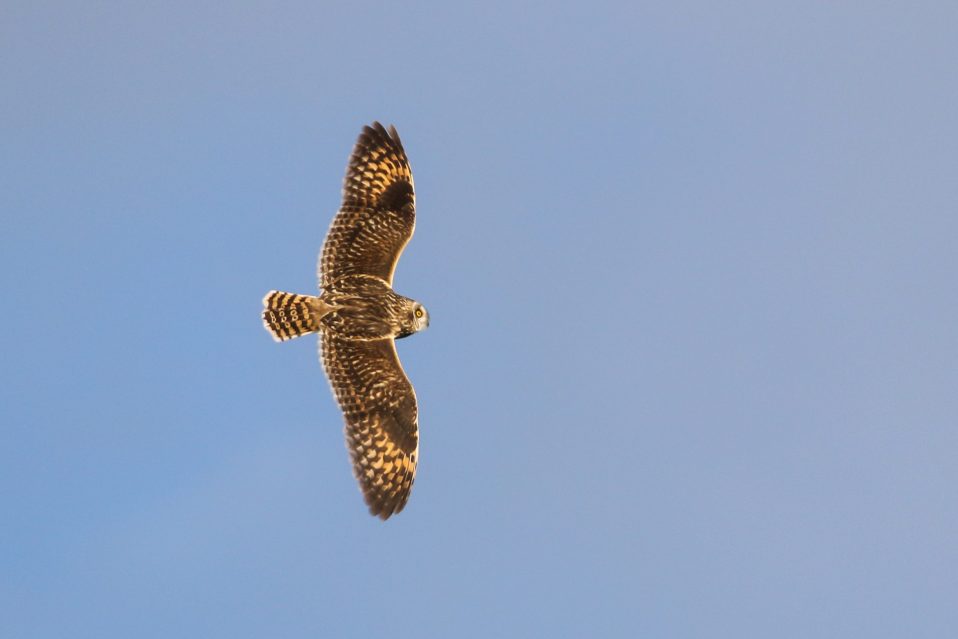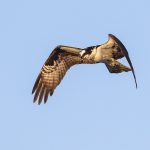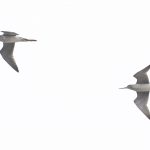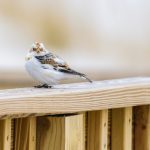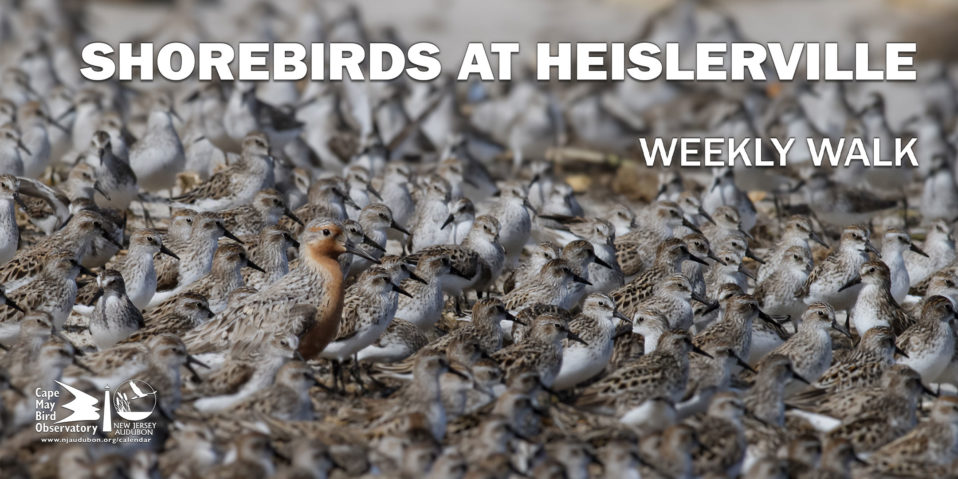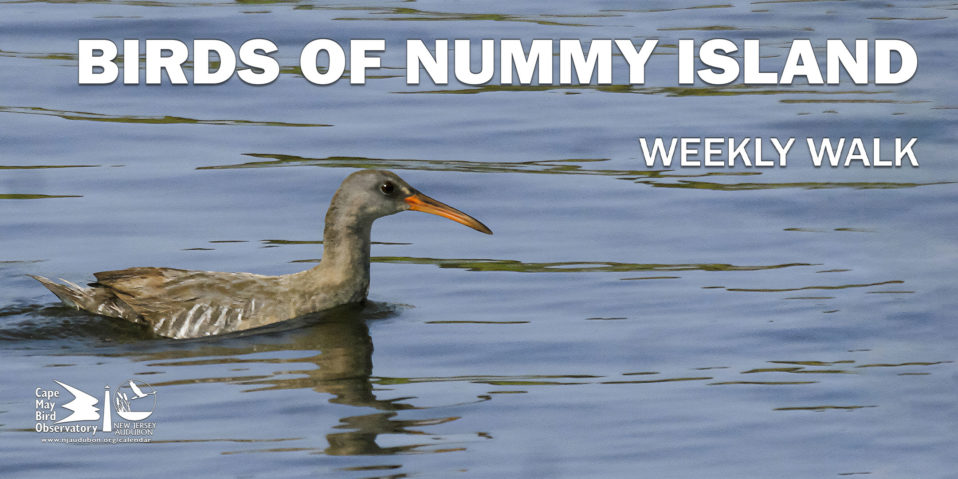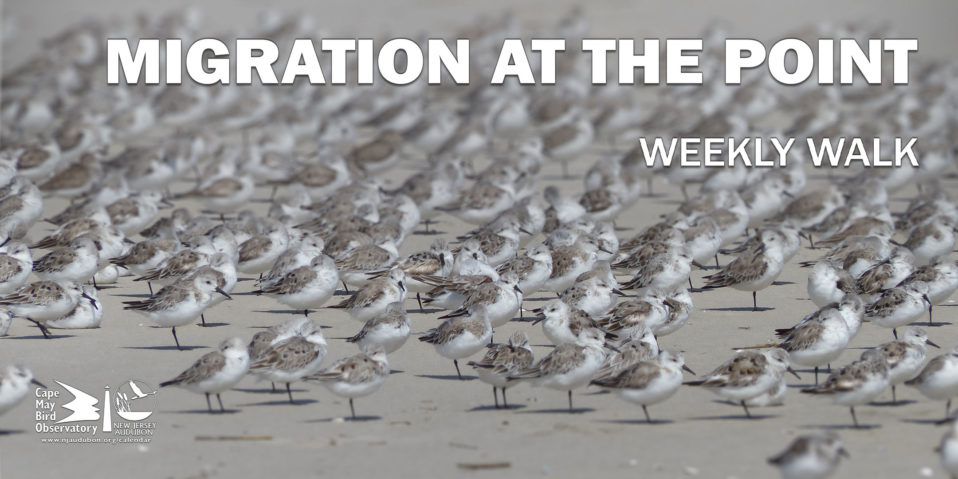A Short-eared Owl at the Cape May Springwatch on April 2. Photo © Tom Reed.
By Tom Reed
The weather has been less than ideal for bird migration in Cape May over the past few weeks. A generally cool and wet pattern has taken hold, and that has prevented any prolonged movements of migrants locally. Thankfully, we’ve seen a few brief breaks when the winds swung around to the south and the warmth brought some migrants. I’ll touch on a few notable events and species that have occurred recently:
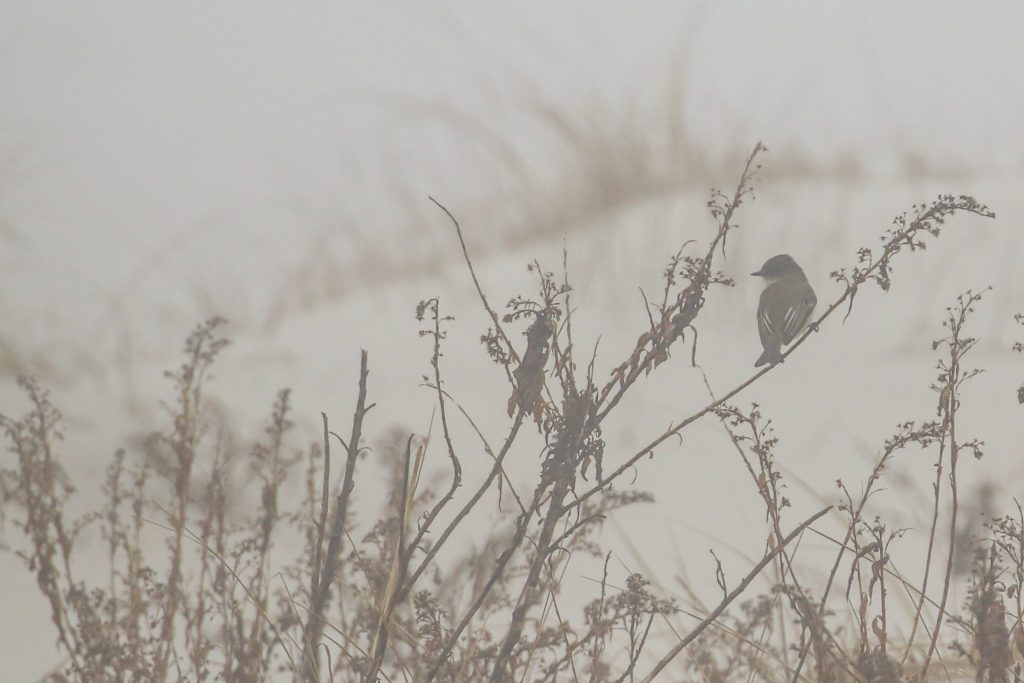
One of many Eastern Phoebes brought to Cape May by foggy conditions March 25. Photo © Tom Reed.
-
-
- A Foggy Fallout
-
The same geographic features that make Cape May a concentration point for southbound migrants in fall tend to work against the area in spring. An unusual weather event (or combination of events) is often required to bring significant numbers of songbird migrants to the peninsula, and we saw such an event occur March 25. Long-awaited southwest winds the night before encouraged many early-season migrants to take off to our south. As these birds traveled toward the Cape May area during the overnight hours, they encountered fog and drizzle, which presumably led to many dropping into Cape May or scurrying back to shore the next morning. Headliners from this event included a record-early Upland Sandpiper, a rare Long-eared Owl that emerged from the fog at sunrise, and 100+ Eastern Phoebes counted from Coral Avenue alone! Based on reports elsewhere at Cape Island and throughout the peninsula, we felt confident that there were easily 500-1,000 (if not more) Eastern Phoebes in the county that day. Other species that featured prominently this day included Dark-eyed Junco, Song Sparrow, Golden-crowned Kinglet, and Pine Warbler, with hundreds of the first three species found throughout the peninsula.
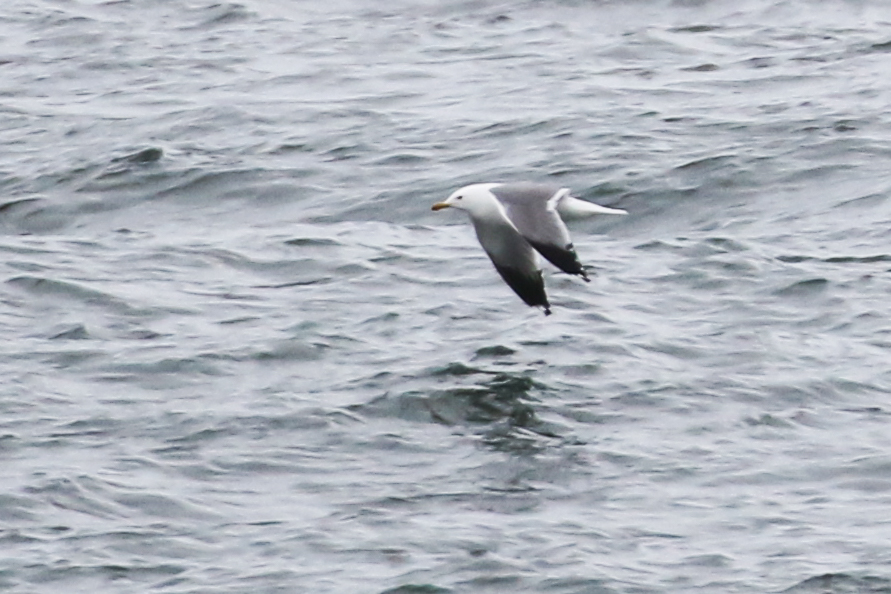
Adult California Gull flying past the Cape May Springwatch on March 31. Photo © Tom Reed.
2. California Gull!
We have enjoyed a number of strong waterbird movements recently, a feature that can be a silver lining of sorts for the count staff when conditions are not optimal for landbird migration. A particularly memorable flight on March 31 brought 3400+ Northern Gannets, 1500+ scoters, close to 500 Red-throated Loons, an early Brown Pelican, and an adult California Gull– representing one of only a few records for New Jersey. While our migration monitoring efforts are not focused on the singular and rare, surprises like these are always welcome and are part of what keeps us going during the slow times.
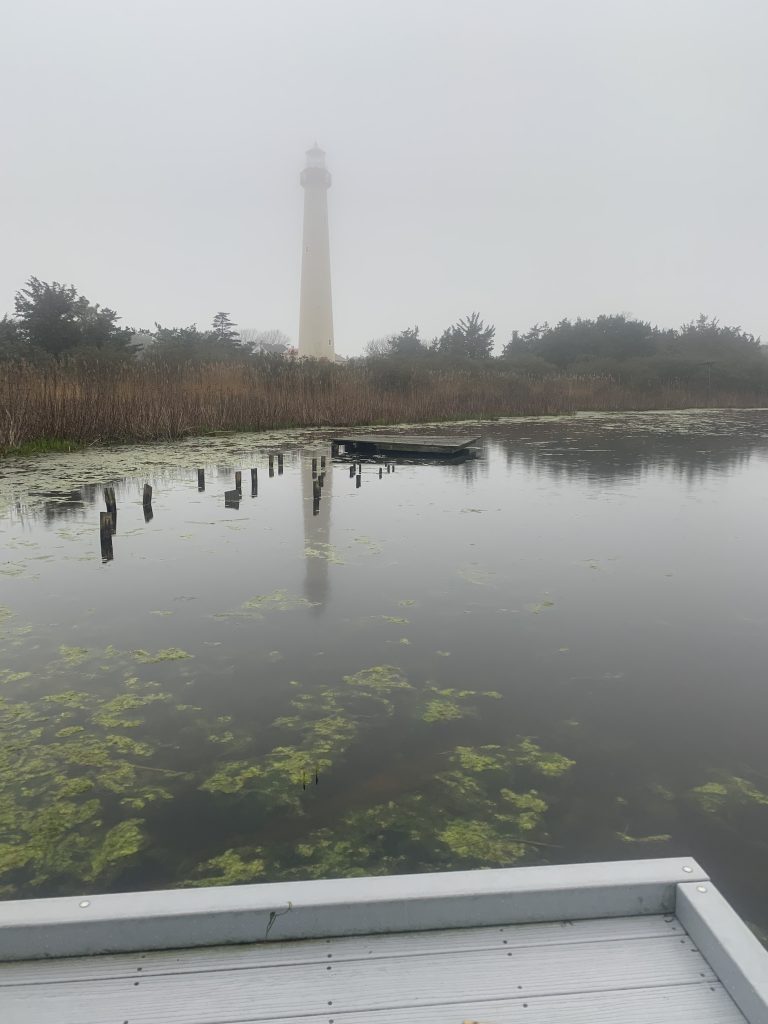
A “typical” view of the Cape May Lighthouse in recent weeks. Photo © Tom Reed.
3. Ground Surveys
As we look to expand the reach of the Springwatch program, our focus turns to canvassing Cape May Point for grounded migrants– with a focus on birds that were presumably migrating the previous night and found their way to land’s end, but may not necessarily also fly past our migration watch in the dunes. We are currently exploring best practices for accomplishing this, which at present consist of a series of timed point counts around Cape May Point, followed by a traveling count (census) through the trails at Cape May Pt. State Park. The point counts have revealed numbers of early-season migrants that have largely gone unseen at Coral Ave, such as various sparrows, Winter Wren, Hermit Thrush, Eastern Towhee, and kinglets. The State Park census has routinely turned up 50-60 species a day through the period, with the aforementioned species also featuring prominently. An added bonus, as the census focuses on all species, is the data we’re collecting on lingering winter species, such as waterfowl. While we actively monitor the arrival dates of northbound migrants and how those might be shifting, there is likely also some value in determining whether species that winter locally are leaving earlier or later.
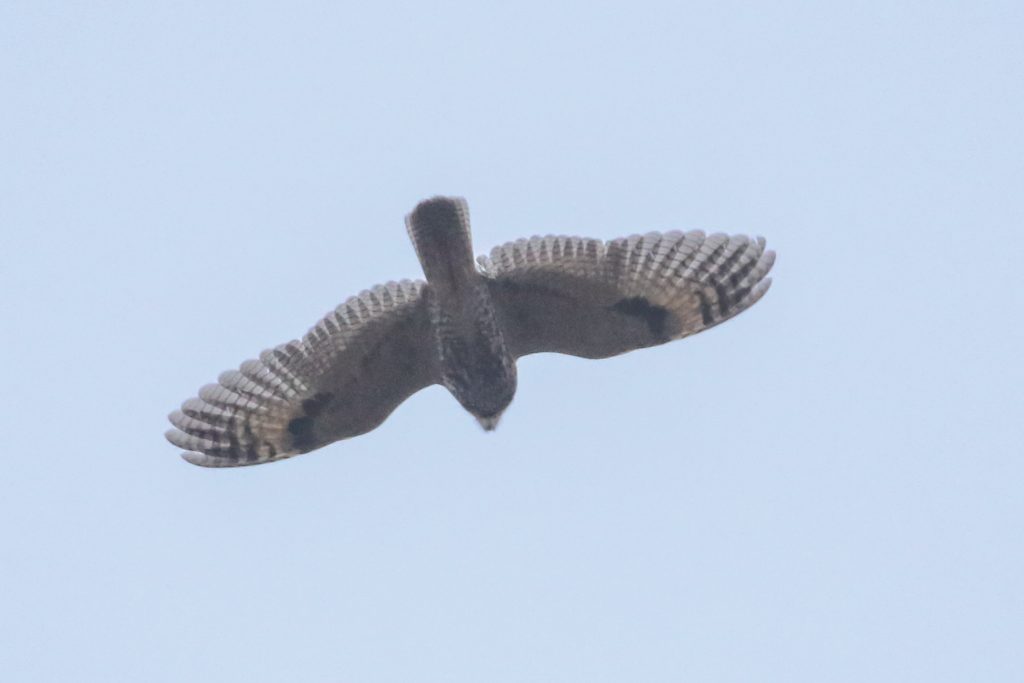
A Long-eared Owl appears from the fog at the Cape May Springwatch on March 25. Photo © Tom Reed.
4. Additional Highlights from the Migration Watch
Miscellaneous notable species and counts recorded at Coral Ave during this period (and not previously mentioned) included Cattle Egret and 30 Lesser Black-backed Gulls on March 27, 4 early Chimney Swifts on March 29, 2 Red Crossbills on April 1, Cave Swallow and Short-eared Owl on April 2, an early Prairie Warbler on April 5, 30 White Ibis and a Pine Siskin on April 6, and a Humpback Whale on April 7.
——————————————————————————————————————————-
Thanks for reading, and we hope to see you in Cape May this spring! The migration count at Coral Ave starts at sunrise every day and continues for at least four hours; visitors are welcome but must wear face masks and adhere to social distancing requirements / additional CDC guidelines. To learn more about the Cape May Springwatch (and to view daily migration count totals), head over to our Springwatch information page. Our staff greatly appreciates continued support from collaborators Larry & Judy Winne, along with continued partnerships with the Borough of Cape May Point and data entry provider Trektellen.




